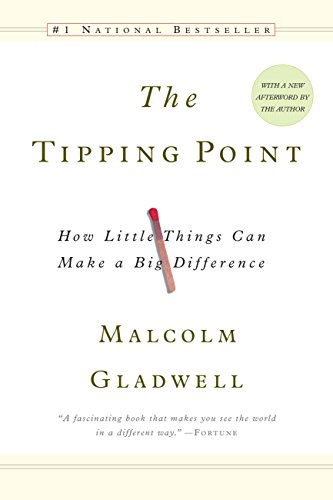

This article is an excerpt from the Shortform summary of "The Tipping Point" by Malcolm Gladwell. Shortform has the world's best summaries of books you should be reading.
Like this article? Sign up for a free trial here .
In The Tipping Point, Malcolm Gladwell explains how social epidemics — spreading ideas, messages, behaviors, and products — function like viruses, growing gradually until they reach a critical mass (the tipping point) and explode. What are some good tipping-point examples?
We’ll look at two powerful tipping-point examples from Gladwell’s book and discuss how epidemics occur in both the medical and social worlds.
What Is the Tipping Point?
Before we look at our tipping point examples, we need to know what the tipping point is. It’s based on the idea of medical epidemics.
Epidemics don’t build gradually and steadily; they grow and reach a boiling point or critical mass, at which point they explode and turn into an epidemic. That threshold is called the tipping point.
It can be hard to wrap our head around the notion that drastic change happens at one particular point because we tend to think that significant changes occur in a steady progression (e.g. a river doesn’t flood instantaneously when a storm hits; the water steadily rises over hours of heavy rain). But the tipping point is a critical moment when minor change makes all the difference (e.g. the moment the water crests the river bank).
Think of snow: The difference between 34 and 31 degrees Fahrenheit doesn’t feel much colder than the difference between 37 and 34 degrees. But when that same three-degree drop happens at the tipping point — 32 degrees — rain becomes snow.
Principles of the Tipping Point Examples
As we’ll see, our tipping point examples exemplify three principles of the tipping point.
This book focuses on how to push ideas or products to a tipping point in order to create a social epidemic. There are three factors that can be adjusted to tip an idea to a social epidemic: the messenger, the message itself, or the context of the message. You can turn your ordinary idea into an epidemic by altering one or more of these aspects.
- The Law of the Few: Certain types of people are especially effective at spreading an infectious idea, product, or behavior.
- The Stickiness Factor: You can change the presentation of a message to make it more contagious and stickier (having a more lasting impact).
- The Power of Context: The environment in which the message or idea is delivered can have a huge impact on whether enough people adopt and spread it to create an epidemic.
Tipping Point Example #1: Baltimore’s Syphilis Epidemic
Let’s take a look at our first tipping point example: In the mid-1990s, a syphilis epidemic exploded in Baltimore. The disease had been present in the city previously, but the confluence of a few, relatively minor factors created a tipping point; all three rules of epidemics were at work.
The Law of the Few
A disproportionately large number of people who were likely to be exposed to the disease were concentrated in two housing projects that bordered the epicenter of the city’s syphilis problem. These two housing projects were demolished around the same time, displacing many infected people to other areas of the city. This spread the disease more widely to other communities, rather than keeping it relatively contained in one or two areas of the city.
The Stickiness Factor
Medical services in the city’s poorest areas took a budgetary hit, cutting the capacity to serve patients in STD clinics. As a result, patients with syphilis had to wait an additional few weeks before getting treatment, in the meantime infecting more people and effectively making the disease more contagious.
———End of Preview———

Like what you just read? Read the rest of the world's best summary of "The Tipping Point" at Shortform . Learn the book's critical concepts in 20 minutes or less .
Here's what you'll find in our full Tipping Point summary :
- What makes some movements tip into social epidemics
- The 3 key types of people you need on your side
- How to cause tipping points in business and life






